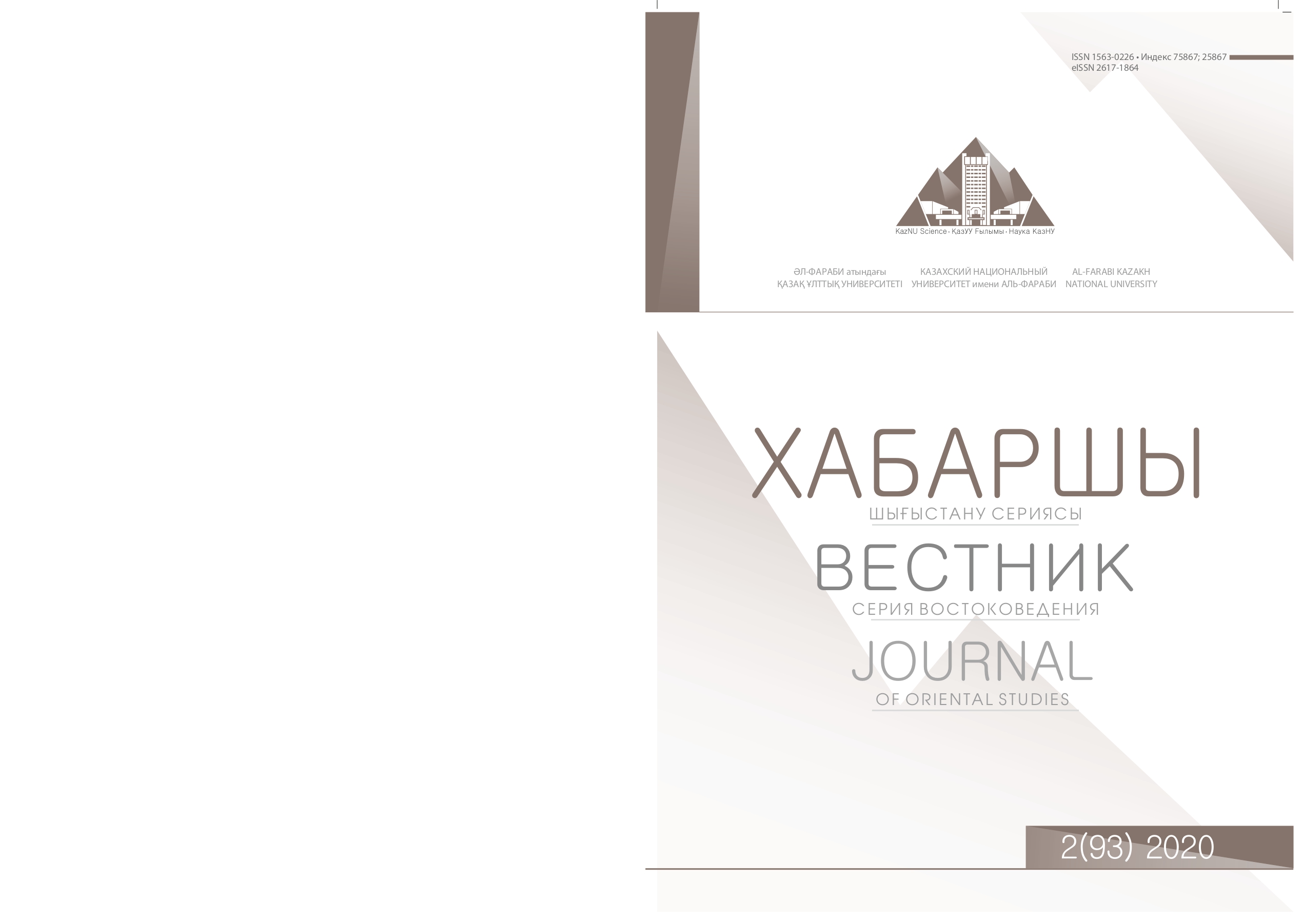Morphological Character of Diwani Hikmet (Based on the Kokshetau version)
DOI:
https://doi.org/10.26577/JOS.2020.v93.i2.12Abstract
The article analyzes the language features of the version of Diwani Hikmet found in Kokshetau, the main merit of Ahmet Yasawi, who made a great contribution to the wide spread of Islam in the Turkic world and the transformation of the Turkic language into a religious language. Along with the assumption of the period in which the manuscript was written, it is compared from the morphological side with the language of the Turkic monuments written at various stages of the Turks in order to describe the indicators characteristic of the language features of the hikmets. The method of morphological analysis allows us to recognize historical stages, stages of development, and features of language formation. At the same time, given that there is a lack of materials in this direction in Kazakh science, this article can become a source for further research. The difference in the spelling of the Turkic monuments of the medieval manuscript, which become the main record of nysanymyzga, is not particularly observed from the outside. In General, a form of the Arabic alphabet based on the Turkic languages was used on medieval monuments, but this type of writing does not allow us to recognize some sounds. Nevertheless, the article aims to clearly reflect the phonetic, morphological units and personalities of monuments, based on some methods and systems formed in Turkology. As a result, it was proved that the hikmets do not calculate the indicators typical for some Kipchak and Oguz languages, and their language features are very similar to the language written by the Turkic epoch in Chagatai time. Key words: Divan-i Hikmet, Kokshetav copy, morphophonology, manuscript.




